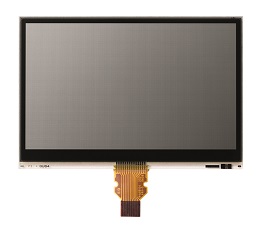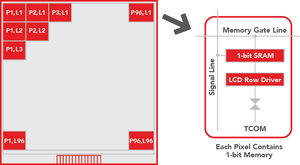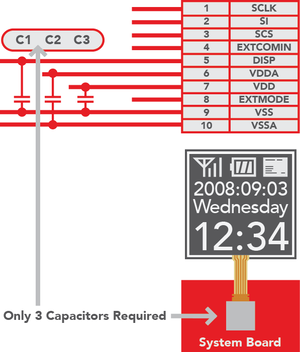Memory-in-Pixels
Memory in Pixel LCDs
High Ambient-Light Performance. Long Battery Life.

High Resolution. Long Battery Life. Thin, Lightweight Design.
The Memory-in-Pixel LCD combines matrix technology with a one-bit memory circuit embedded into every pixel, so information is retained once it's written.
This allows the design of products with ultra-low power consumption and long battery life. It also delivers higher resolution, shock, and temperature tolerance than E-Ink (electronic paper) displays.
① Ultra Low Power ConsumptionMicrowatt range (Typ.) |
② High ReadabilityViewable in any light, from edge-of-vision to brightest sunlight
|
③ Simple InterfaceSingle 5V or 3.3V supply
|
④ Wide/Symmetrical Viewing AngleTypically 120° × 120° |

Requires just 1/40 ~ 1/80 of an STN LCD’s power consumption and 1/1000 of an AM-TFT LCD’s power consumption.
Excellent reflective display performance without the need for a backlight.
Embedded pixel memory stores graphic data, so continuous refresh is not required for a still image. Less power is needed during refresh than with traditional graphic displays.

Embedded driver and peripheral circuits are monolithic on the TFT glass. Each pixel contains 1-bit memory.

MIP LCDs have fast response times for scrolling text and moving images.
Cholesteric, STN, and E-Ink displays require longer times to update the display image (several hundred milliseconds).

Simple 3-wire Serial I/F connectivity (SI, SCS, SCLK)
Only a single 3 V (1.28” and smaller) or 5 V (1.8” and larger) power supply is required
Only 3 external capacitors are required
Fewer peripheral components = simplified design process